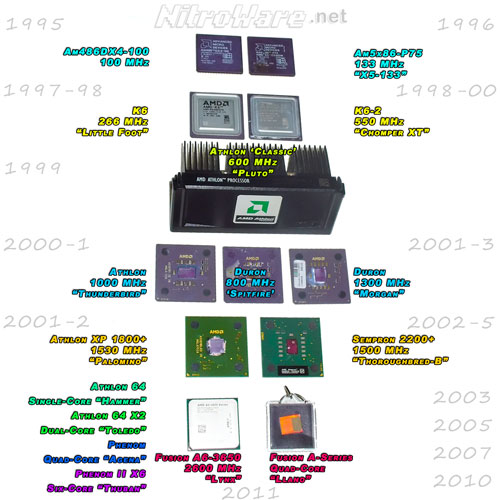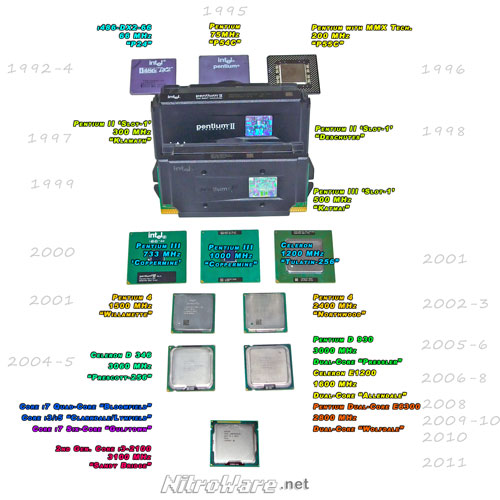 AMD have made some bold claims about their 'Fusion' architecture, especially their A-Series 2011 mainstream computing product range. The industry leader went as far to make some very big claims by declaring their A-series APU as the company's most important product in their history and a computing game changer as it saw the future of computing being visually and graphically rich.
AMD have made some bold claims about their 'Fusion' architecture, especially their A-Series 2011 mainstream computing product range. The industry leader went as far to make some very big claims by declaring their A-series APU as the company's most important product in their history and a computing game changer as it saw the future of computing being visually and graphically rich.
This raises several questions: Is AMD's new mainstream computing solution - their A-Series 'Fusion' APU, hero or hype? How relevant is graphics performance with modern software especially integrated graphics? Which 2011 mainstream PC is a better choice for the consumer - AMD or Intel?
To answer these questions we put AMD's A6-3650 APU and its competitor - Intel's 2nd Generation Core i3-2100 CPU through their paces with the full spectrum of tests ranging from everyday audio/video applications, to industry standard benchmarks, popular 3D games, Professional Digital Content Creation software and Web browsing.
To show the relevance of graphics performance in a mainstream computer in 2011 we also included two other systems. A high-speed Intel Core 2 Duo system fitted with a High Performance graphics card from NVIDIA to show the boost powerful graphics can give an older CPU in everyday applications and a low-speed Intel Core 2 Duo system with older Integrated Graphics to show how far 'integrated' graphics has changed in just a few years.
Background
What a year 2011 has been for consumer technology, new 'smart' devices are released on an almost monthly basis. Unfortunately some of this drive and push from some manufacturers revolves around infinite clone products and profit rather than enhancing technology and the consumer experience.
It takes innovative and ground breaking hardware and software technology to bring these products and user experiences to market and into our hands. Intel, AMD, ATI and NVIDIA; the leaders in Processors, System Platforms and graphics featured in this review have these ideas as their core principles and have consistently introduced interesting and worthwhile products. In some cases mainly graphics they have changed industry segments or user experiences completely.
Desktop and Portable computing in the traditional sense has lagged behind the rapid development of phones and tablets although annually delivering in power, performance and battery life. To keep pace with the consumers taste for the rich visual web and multimedia as well as requirements of software developers , traditional computing needs to deliver. The 'slideshow' experience of a slow computer or poor battery life typical of the 1990s and 2000s is no longer acceptable or tolerated by the increasing impatient user who is accustomed to the now always on and visually rich digital lifestyle.
It took a few years as of 2011 to get mainstream desktop and portable computing to a level where we can now call an affordable computer 'fast' or a portable computer finally has acceptable battery life that is more than 2 hours – vendors claim 'all day' battery life in 2011.
Although PC sub-systems have gotten faster over the years, much of the innovation has revolved around graphics capability of a computer whether it is the interface of the operating system, digital video, 3D Gaming or professional graphics and more recently the web. Without graphics, we would not be able to see what we are doing and computing will revert to the dark old days of the command line operating system such as DOS or UNIX. Apple Inc. recognised the importance of a graphical interface in the early 1980s and that was only just the tip of the iceberg.
The last twenty years of computing would not have been possible without suitable graphics technology. The next twenty years of digital technology will rely on graphics technology even more in ways only the 'founding fathers' of computing have envisioned. All current popular entertainment and information devices focus on a rich graphical display whether it is a smart phone, television, media player, net book or in-car infotainment system. No more needs to be said about these devices or the fascination, if not addiction the populous have with smart devices. The graphics revolution can be seen with your own eyes.
The advance in graphics technology since 2006 has allowed software developers to leverage these powerful parallel processors and speed up otherwise sluggish multimedia, scientific computations several times. This revolution has meant that computer manufacturers can no longer sacrifice graphics capability with old or weak designs. The reliance on graphics by modern software has led the CPU vendors to finally integrated advanced graphics capabilities into the CPU itself, something which was not part of the original concept of the computer processor. As the following diagrams show, only the bottom most recent processors of 2010 and 2011 have integrated graphics where as prior graphics was more an auxiliary component relative to the CPU and the required systems it needs to operate.

